By Rachel Leitch
One girl does not fit all.
Ever buy something one size fits all, only to find it didn’t fit your head or foot or whatever?
Heroines in fiction tend to be the same way. We’ve got an entire drawer full of cookie cutter clichés, some even carving their way into hit books and movies.
Problem is, most of those cookie cutters range from laughably ridiculous to outright demeaning.
In Genesis, the beginning of our own story, God created both male and female and He called both very good. Throughout the Bible, we see Him value and choose women over and over again. He valued women. So should we—even in fiction.
So let’s introduce ourselves to eight common female clichés—and turn them into heroines worth rooting for.
1. The Brainless Chick
The Brainless Chick is notorious for making stupid decisions. Decisions no one in their right mind would make. She’s often called in when an easy bridge to a plot point is needed. In some cases, her family and friends have warned her against the decision repeatedly, but she makes it anyway. Then, when she falls into trouble, she’ll loudly bemoan her plight to the world. In the real world, she’d die in chapter one.
Case in Point: One novel I read starred a Brainless Chick who had been trailed by a stalker for the entire book. Her motel keys went missing, and, despite having been warned by her friends not to go alone to the spooky house she’s been remodeling—a house the stalker has also been frequenting—she went back alone at night to search for her keys. Boom! The stalker attacked. Somehow, she survived.
How can we turn a Brainless Chick into a heroine? Heroines still make mistakes—but it’s not at the loss of their own intellect or as an easy cop-out to reach the next big plot point. They think through risks and react accordingly. Even if something turns out to not be a great idea, both they and us as readers need to be convinced that it is. Sometimes—maybe even often—their plans go awry. But at least they had a plan.
Case Study: In Stephanie Morrill’s The Lost Girl of Astor Street, Piper Sail is searching for her missing best friend in some of the darkest parts of Chicago. A Brainless Chick would have plunged in alone (and probably at night, too). Instead, Piper made sure she had someone with her every time—whether that was a detective or a friend who could call the police.
2. The Damsel in Distress
The Damsel in Distress constantly needs someone to bail her out (usually her love interest). However, even though people often sacrifice everything for her, she rarely sacrifices anything for them, and if she does, it’s not something of worth. She rarely, if ever, solves any problems or takes any initiative. She is focused only on her needs. She is solely a victim of the plot.
Case in Point: One (very popular) movie I saw starred a Damsel in Distress who recently moved thousands of miles away from her boyfriend before the end of her senior year, promising she’d come back for prom. But when prom rolls around, she’s still curled up thousands of miles away, crying to her boyfriend over the phone over how she can’t emotionally handle coming back (even while claiming she still loves him!). Of course, her boyfriend rushes to the rescue, literally traveling thousands of miles just to shore up her self-esteem.
How can we turn a Damsel in Distress into a heroine? Self-awareness—something Damsels in Distress usually have—is good. They can be very aware of their emotional needs. It’s okay to need help, to ask for it, and to receive it.
But being selfish is not. A Damsel in Distress needs to not only be aware of her own needs, but the needs of others. So give her something to give, some way to help, something no other character has—whether that be a unique skill, passion, or character trait. In my example above, that scene would have been fine if the Damsel in Distress had given to those around her earlier in the movie. Instead, it was just one in a long string of needy moments.
Case Study: In Disney’s Tangled, Rapunzel is set up to be a Damsel in Distress. I mean, she has lived in a tower her entire life, and has no knowledge of the real world. But when it comes to leaving the tower, it’s Rapunzel who does the planning and dealing. She’s pretty good with a frying pan. Her hair can heal people, and she uses that power for good. She gives just as good as she gets.
3. The Drama Queen
Tears! Tantrums! Swoons! The Drama Queen has all the feels, all the time, at a moment’s notice, and at the slightest provocation. Sometimes for no reason at all. If they have a reason, it usually has to do with them.
Case in Point: The same novel I mentioned earlier gave the Brainless Chick a decidedly Drama Queen moment when she tried to get a face mask out of a box. After the third one broke, she went on a rampage, crying and hacking at an old floorboard with a crowbar.
How can we turn a Drama Queen into a heroine? What Drama Queens often forget is that not all women process or display emotion the same way. Some think things through long before they react. Some stuff their emotions. Some are impulsive. Some are sensitive. Some are stoic. Some are prone to certain emotions but not others. A great resource to take a look at would be the Myers-Briggs Sixteen Personalities, especially the parts about whether someone is a thinker or a feeler. I use the sixteen personalities website and profiles to help type my characters. (Note: I have not read everything on this website, so I cannot speak for all of its content.)
Case Studies: In Nadine Brandes’ Out of Time trilogy, Parvin Blackwater was a very timid girl who could have easily been a cowering Drama Queen. Instead, her emotional responses were developed and made uniquely hers, so that, even though I wouldn’t react the same way, I understood why she was. She was given the chance to step out of her comfort zone even as her fears were screaming at her.
4. The Eye Candy
Often when I’ve watched movies with male audience members, they’ll give commentary on the leading lady. “So-and-so’s too (fill in the blank) for me. I just never thought she was pretty. She might be pretty if (fill in the blank).”
The Eye Candy usually has only one specific look, ignoring diversity of race or physical features. She has no other purpose in the story other than to wear cute outfits and look pretty. If she does have a feature that doesn’t conform to “the look,” she spends the entire story whining about it, wishing she didn’t have it, feeling self-conscious about it, or trying to get rid of it.
Case in Point: I remember one movie in particular that my brother wanted to see that I was very interested in the heroine. She was played up to be a gearhead racecar driver—not something you see often from a heroine. I was disappointed to find she had no personality and no real role in the story, despite being the protagonist. Not only that, but she didn’t deliver on the promises made from the movie premise. She could have been replaced with one of the other characters, and the movie would have been better off. She was only there to look pretty.
How can we turn an Eye Candy into a heroine? The purpose of a heroine is not to be pretty—at least not as current culture defines pretty. Every girl—no matter who she is and what she looks like—is pretty, because she is created by God. So celebrate those diversities in your heroine—maybe she’s tiny or athletic, maybe she’s tall or heavier-set, maybe she has glasses or freckles, maybe she has a special learning or physical need. And no matter what your heroine looks like, she needs to have a reason to be in your story.
Case Study: In The Greatest Showman, Lettie Lutz (the bearded lady) does not conform to “the look.” She has a unique physical feature, but she doesn’t spend the whole movie wishing it away. Instead, she becomes a confident leader and friend, leads one of the most famous songs from the film, and fills an important role in the story.
5. The Girly Girl
Remember the PNK’s from Pixar’s Monsters University? They all looked, dressed, and acted exactly the same.
That’s what the Girly Girls have become. They all have the same interests—namely, doing the hair, fashion, and decorating. They all have the same personality, and it’s usually Drama Queen.
Case in Point: One speaker at a writers’ conference I attended said that when writing fiction intended for a female audience, the author always needed to describe what everyone is wearing. Major panic moment for a young author who rarely notices what people are wearing in real life.
How can we turn a Girly Girl into a heroine? Similar to the Eye Candy, the secret is to give them a unique passion and a unique personality. There are literally hundreds of choices for hobbies and careers, many of them never or rarely explored in fiction. Think of your hobbies or your friends’ hobbies. What if your heroine took up one of them?
Let’s be clear: there’s nothing wrong with hair or fashion, and many real-life girls love them! I am not intending to discount it. Some incredible heroines have had those interests. But not every girl does—or at least, not in the same way.
If your heroine simply insists on loving fashion, give her a unique angle. What does she see in fashion? The art? The color? Does she delight in serving her friends through it? Are her styles unique to her? For instance, one writer I talked to said she created a female character who loves fashion—because she loves to mix and match colors and styles that don’t match.
Case Study: Some of the best heroines I have ever seen in a story are GoGo Tomago and Honey Lemon from Disney’s Big Hero 6. First off, both of them love science—something a Girly Girl would never dream of laying hands on. Not only that, but they both have unique branches of science that they love. They look different—GoGo is short while Honey Lemon is long-legged. Their personalities couldn’t be more different—GoGo is a woman of few words and rare emotion, while Honey Lemon is bubbly and enthusiastic about, well, everything. (For the record, they also have their own very distinct senses of fashion that play into their character as well!)
Some other great examples of unique heroines are:
6. The Man Hunter
Remember the old songs from Disney’s classic Snow White and the Seven Dwarves? “I’m wishing for the one I love?” “Someday my prince will come?”
Those are the Man Hunter’s mottos. The Man Hunter is obsessed with guys. Kissing guys. Dating guys. Rating how attractive a random guy on the street is. Guys are her entire world. And when she gets her hands on a guy, she guards him with jealousy and suspicion. Rabidly. Man Hunters tend to be a favorite in many romance novels.
Case in Point: I picked up one YA time-travel novel with high hopes. Then the Man Hunter struck. Instead of epic battles like the back of the book promised, the Man Hunter fought for a paragraph or two in the climax before she got wounded. She spent the rest of the book fantasizing about a guy she liked, scheming how to get a dance with him, and being obsessed with kissing him.
How can we turn a Man Hunter into a heroine? Give your Man Hunter a life outside of boys. Some girls are naturally attracted to guys more easily than others. Maybe it turns out that your heroine isn’t attracted as easily as you thought. Or maybe she is—but she doesn’t wrap herself around her guy so that he can’t move. She has friends, hobbies, and a life outside of her guy.
Case Study: In Roseanna M. White’s Codebreakers trilogy, the heroine of the first book, Margot de Wilde (mentioned above) does not fall in love easily. In the second and third books however, Ara Denler and Lily Blackwell are much easier cases to crack. Even though they love their respective guys and find certain things about them attractive, they have lives—Ara with her nursing and Lily with her photography, as well as friends both male and female at their respective jobs. They love their man—but they don’t find their fulfillment in them.
7. The Rebel Without a Cause
The Rebel Without a Cause hates everyone and everything. She’s fighting constantly, bucking authority any chance she gets, and being overall rude to the other characters (again, usually the love interest). She fights all the time, but she’s never fighting for anything. She’s just making noise. If she doesn’t get what she wants, she pushes everyone to believe the authority is cruel. She’ll probably get what she wants anyway. (Although in real life, she’d probably end up in jail.)
Case in Point: In one classic movie I remember from when I was younger, The Rebel Without a Cause wanted to abandon her family and everything she’d ever known for another world—but she had no motivation. And without motivation, she still went ahead and did some very stupid things without any thought for her family and how it was affecting them. In the end, she got exactly what she wanted.
How can we turn a Rebel Without a Cause into a heroine? Give them a cause! The strongest cause you can think of. Whether it’s through a powerful backstory, a painful circumstance, or just overall common sense, make us agree with your heroine.
Once she’s got a good cause, have her try the correct paths to achieve success first. Have her go to the authority and request permission. Have her try being kind first. Have her try a peaceful treaty. Or give them a reason why they can’t take the correct (and usually more logical) path. Perhaps the ruler has threatened to kill her. Perhaps her father is absent. The possibilities are endless!
Then, once it goes wrong, we’ll understand when your heroine rebels a bit.
Case Studies: In Disney’s Moana, Moana wanted to save her island from the darkness that would soon starve them of food and eventually devour them all. She went to her father first. (Twice, actually.) When he continually said no and refused to listen, she had no other choice but to strike out alone to save everyone on her island.
In Disney’s 2019 Aladdin, Jasmine sees where Jafar’s evil advice, and eventually, his reign is leading. She doesn’t start an army. First, she talks to the leader of the guard—someone she’s known since he was a boy—and convinces him. This, however, does not shake Jafar, and Jasmine resorts to helping Aladdin.
8. The Tough Girl
The Tough Girl needs help from nothing or no one. Any need she might have (and that’s a big might), she can solve entirely on her own, probably with a massive weapon or a good set of fists. Which she may or may not also use on anyone who breathes on her. She can do anything anyone else does and better too.
Case in Point: (Deep sigh.) I really struggled to find a case in point for this one. That would be because the Tough Girl is my pet cliché. Many of my favorite heroines are the tough, independent type. When I asked another writer for suggestions, she promptly suggested one of my favorite heroines of all time.
How can we turn a Tough Girl into a heroine? First off, Grace A. Johnston wrote an amazing article on this a couple weeks ago that I highly recommend. (You can read it here)
The myth of the Tough Girl is that a girl cannot be strong and feminine at the same time. That they can’t be strong and emotional. That they can’t be strong and girly. That they can’t be strong and caring.
So show the crack in your Tough Girl’s armor. What gets to her? What brings her to her knees? It could be a backstory. It could be a hidden weakness. It could be a deprived need.
Case Studies: In Dreamworks’ How to Train Your Dragon, Astrid is the star of her class and ruthlessly defends that reputation. She can wield an axe anywhere an axe does or does not need to be wielded. She fights fires in the heat of the dragon battle and never flinches. Even when Toothless drops her in a tree, she refuses Hiccup’s hand up onto Toothless’ back.
But when Toothless plunges, diving into the water and spinning around to get her to say she’s sorry, we see her crack. She may fight dragons, sure. But she didn’t understand them. And that scared her. Her Tough Girl exterior was a cover-up—a cover-up revealed when Toothless stops spinning and he and Hiccup take her on an evening flight.
In Disney’s Raya and the Last Dragon, Raya is confident, always armed with a sarcastic jab or a sword that can turn into a rope. She trusts no one and takes care of herself. But we see her crack when she’s all alone in the cave begging Sisu to help her bring her Ba back.
To Sum Up . . .
1. Give your Brainless Chick a plan.
2. Give your Damsel in Distress something to give.
3. Give your Drama Queen a unique way to process her emotions.
4. Give your Eye Candy her own kind of pretty and a purpose.
5. Give your Girly Girl a unique passion and personality.
6. Give your Man Hunter a life outside boys.
7. Give your Rebel Without a Cause a cause to fight for—and have her fight it right.
8. Give your Tough Girl a crack in her armor.
God values all people—of all races, with all physical features, with all personalities, of either gender. He values women. And He has given us the unique honor of representing something He treasures in our stories.
Who will your next heroine be?
*Who are some of your favorite heroines? Why? What about your least favorites? Let me know in the comments below, I’d love to chat!*
Rachel Leitch
Rachel Leitch discovered the book of writing when she was seven. She’s been turning pages ever since! When she’s not hidden away penning young adult historical adventures, she’s trying to fit all her reads on her shelf in a somewhat organized manner, rambling through history, daydreaming at the piano, or teaching students to be just as bookish as she is. In all her adventures, she learns how to shine brighter for the Father of Lights.
For more lessons drawn from books and movies and other stories, follow her adventure journal at https://racheljleitch.weebly.com!



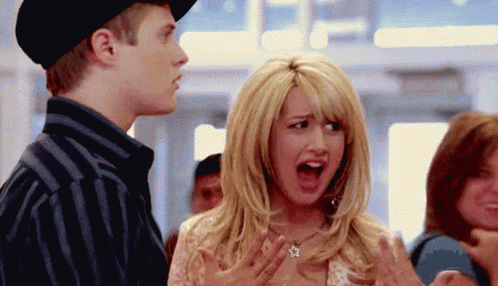
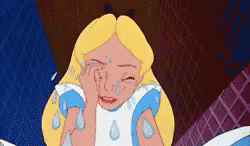

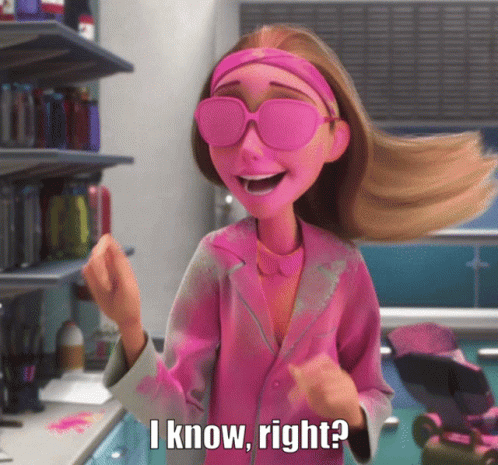

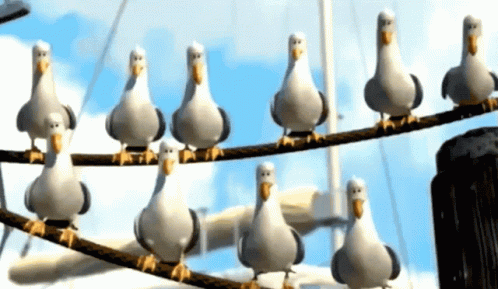

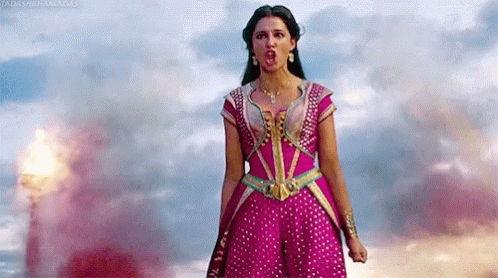
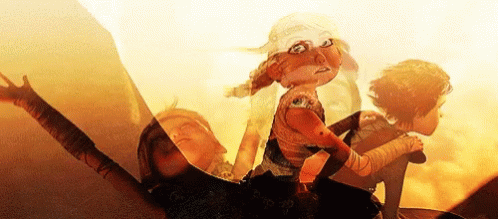
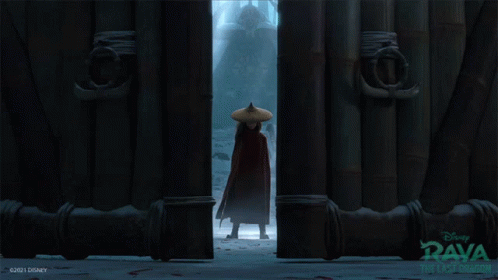
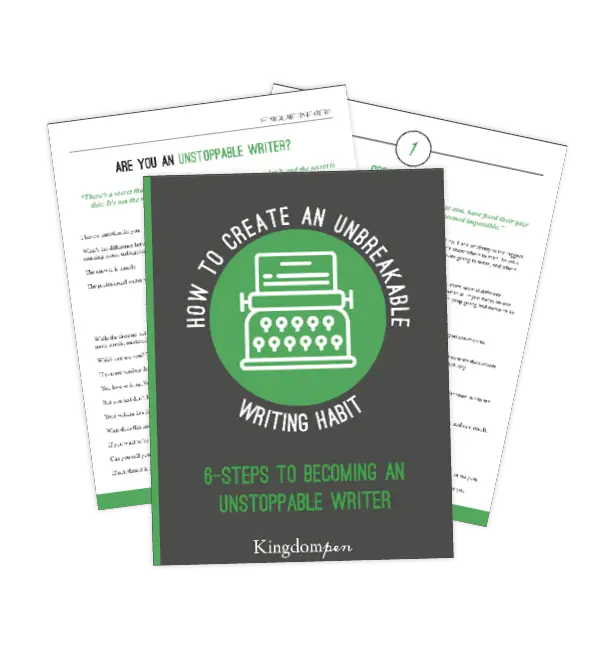

Great article! I have a group of five female characters which I could use this on. I think one of them, Star, is probably the man-hunter type (she just won’t stop following this one guy around), but she also enjoys drawing (usually on walls where her targeted audience can clearly see her work). She’s good at fighting, and enjoys stuff other than boys (like loud dance parties and pillow fights with her sisters).
Then I have Bullet, who is definitely the tough girl type. I haven’t developed her character much yet, but I’m guessing her crack would have something to do with the fact that she cares deeply for her sisters and friends.
Then there’s Feather; she’s hard to classify. She is fierce when she needs to be and happens to be an excellent sniper, but she loves to paint and draw, loves animals and has a pet hunterclone (a beast my brother made up) called Stormcloud, and likes to play the flute. Her character is a little more than that, but it’d take far too long to explain.
Very interesting! Sounds like you’re well on your way to having two very strong heroines!
Oh, here are the other two.
My fourth character is Rivet. A rivet is sort of like a screw or a nail, and Rivet is definitely a techy kind of person. I don’t know how exactly to classify her either, but she is very scientific and can make sense of things that confuse almost everyone else. She also likes hands-on things. Stormcloud is very interesting to her (but unfortunately, her husband is allergic to hunterclones)
Last is Liberty. She’s the leader of the group. She’s not too shabby with a knife or a gun, and fists are a seldom seen but powerful alternative if she doesn’t have any other weapon. She is definitely a family-oriented person–she’s kept the five sisters together all this time, and she is married but doesn’t have any kids (yet).
Thank you!
I was going to explain the other two but somehow that comment got cut off, so….
AMAZING article, Rachel!!! Oh, and, yes! All of Roseanna M. White’s heroines are awesome! (Glad to find a fellow fan!)
OH MAN THIS IS MY NEW FAVORITE ARTICLE ON KINDOM PEN NO JOKE!!! *remembers the article that mentioned brain juice and had attacking Koalas* OKAY THIS IS MY SECOND MOST FAVORITE ARTICLE ON KINGDOM PEN!!!
I am very very very… passionate (?) about this subject. The Tough Girl and Rebel With No Cause drive me SOOOOO crazy sometimes, although there are several “tough girls” out there that are done so well and are so lovable. 😀 *decides I need to stop using the word “so” so much*
Anywho, thanks so much for this article, Ms. Leitch!! I’m so glad someone finally did one of these, and I was comparing my heroines the whole time!
This article was FANTASTIC!!!! These cliches have annoyed me for soooo long and it is SO good to finally hear someone talk about them!!! I agree with everything you said!! Great–and I cannot say this enough–GREAT article!!!!
This is such an awesome article, Rachel! I especially love your points about the Tough Girl (I’ve read far too many books that have done this trope poorly). Thank you so much for sharing such an insightful article!
I liked the reference to The Greatest Showman–that’s one of my mom’s favorite movies!
this article was amazing! So helpful and super inspiring for a new book idea… Thank you, gracias, and merci for this amazing advice! (it was also super enjoyable 😀)
This article was brilliant, Rachel! Its easily one of the best I’ve read on this topic.
I particularly love Tough Girls, its one of my favourite tropes, but only when its done right. Katniss, for example, I think is a great version of the trope. She’s tough and a great fighter, but she’s caring and affectionate and protective of her sister and Rue, and she looks after Peeta so lovingly. We also get to see her breaking down as she struggles with PTSD and she’s such a complex character. And Eowyn from Lord of the Rings is one of my favourites for the same reason.
(also I love Moana and Rapunzel and Astrid as well. They’re such complex and compelling characters)
Great article! Very good and helpful 🙂
I’d say Lady Jaye from the GIJoe: retaliation is a good example of a tough girl done pretty well; she’s pretty hard but her armour crack is her father not seeing her promoted when the whole reason she’d gone into military was to prove herself to him. She also gets annoyed by people not calling her Lady Jaye.
(like the one character calling her Brenda XD )
No way! The character I use as myself in my stories is named Jaye, too!
This was an awesome article, Rachel! Thanks so much for sharing. I love reading books sometimes just to make fun of the clichés – is that terrible? It seems there are so many horrible female protagonists. Especially in Christian fiction, alas (and Christian romance even more so!). Thank you for exposing them and shining the light for a better way!
I actually have quite a few heroines (mostly in fan-fics) and this really helps. Thanks 🙂